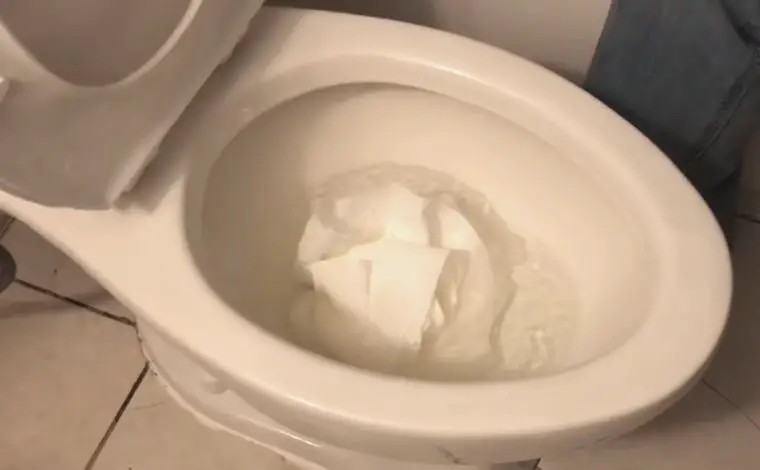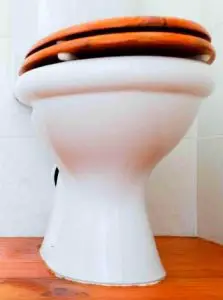I think you don’t think a day without using a toilet. So when a bathroom is attached to your room, you must know some essential maintenance to your toilet. Otherwise, you end up with a clogged one. But sometimes you also notice some other issue in the washroom. The water is continuously running out from the toilet bowl. But the water tank is full. That means there is a problem in the internal system. It would help if you found out the reason for solving this. We will discuss this issue in detail here, and I think it will help you deal with it.
Why does water need to stay in the toilet bowl?
It would help if you considered the need for the water to stay under the toilet. There is a reason behind this mechanism. When the water stands on the bowl, it acts as a barrier to the toxic gas of sewer coming out of the sewer system. The gas vented through the other, separated vent pipes attached to the sewer line. So when you don’t notice any water in there, something is wrong, and you also see an awful smell in the washroom. This gas is very toxic and harmful to your health. That’s why you need to solve this issue as soon as possible.
Why is the toilet tank full but the toilet bowl empty? -Easy Fix
There are many reasons behind the running water issues in the washroom. First, you need to find the exact reason for solving it. I give a few reasons here, but if this is not similar to your toilet, I must get help from a professional. If you are not experienced in repairing the bathroom, don’t try it yourself. Otherwise, you end up with a broken toilet instead of a good one. So let us see why you face this issue and how to solve this:
Toilet paper clog:
Toilet paper creates this type of issue most of the time. When you use more toilet tissue, it sometimes stacks at the bottom of the bowl. And you also know how much water the tissue can absorb. And this is largely from its previous size. This lowers the level of water and clogs in there. This paper will siphon the water from the bowl, and that’s why a cog is created in the trap way.
Solve: When you notice a clog in the toilet bowl, you know how to solve this. Just use a plunger or any unclogging element to clean the tissue from the pipe. If you cannot clean the clog from the line, call a plumber to help you.
Structural fault:
 If you don’t find any clog in the drainage system, there is no fault in your toilet structure. So first, carefully inspect the whole toilet, whether there is any crack you find or not. If any damage occurs in the bathroom in the interior of the toilet, then it’s possible to drain all water from the bowl. You also notice water on the floor for this reason.
If you don’t find any clog in the drainage system, there is no fault in your toilet structure. So first, carefully inspect the whole toilet, whether there is any crack you find or not. If any damage occurs in the bathroom in the interior of the toilet, then it’s possible to drain all water from the bowl. You also notice water on the floor for this reason.
Solve: if you find any toilet cracks, repair this. If it’s impossible to fix, you must replace the whole bathroom and install a new one. So you need to call the plumber for this.
Gravity issue:
Sometimes, gravity also creates this issue in the toilet. If you flush a lot of water, like a whole bucket at a time, then the force of gravity and extra water creates a flush, which works without engaging the tank. So when the tank is not being used, no water is left in the bowl, and you notice an almost empty toilet bowl.
Solve: if you live on the upper floor of the house and don’t use the toilet’s water tank, you can use the flush system. I think that’s not a problem, but after using the toilet’s water tank, if you find the same issue, the problem is internal. You can call for a professional to help you out of this situation.
These are the fundamental reasons for running water issues in the toilet bowl. If you identify the main reason, you can quickly solve it yourself. This is time-saving for you and keeps you some extra utility charges. But if you maintain your toilet regularly, you won’t face this kind of issue in the future.
Fill valve issue
Toilet fill valves bring water to the toilet bowl. If the fill valve becomes problematic, it can not provide sufficient water. As a result, your toilet bowl remains empty, although the tank has sufficient water.
So, you should check the toilet fill valve. If you notice that your toilet tank is empty, you must replace the valve.
A worn-out toilet flapper
A toilet flapper is such an element of a toilet tank that controls the waterflow to the toilet bowl. If you press the flushing switch, the toilet flapper lifts up off the flush valve seat. Finally, the water inside the tank gets a chance to enter into the toilet bowl, and flushes the toilet.
Frequently Asked Questions (FAQs)
How often should I replace my toilet?
If you use the toilet properly and keep it clean and clog-free, you can use it for up to 25 years. After that, you can replace it with a new one. But, the time can vary according to user experience. In some houses, toilets are used frequently because there are more family members. So, their toilets can not last longer.
Is a gravity flush toilet good?
If you want a toilet within a cheaper price range, you can use a gravity flush toilet. But removing the entire garbage from the toilet bowl is not suitable. It can not generate much pressure, so the toilet can not be properly cleaned. But, if you can wash the gravity-flush toilet regularly, you may get a better result.
How can I eliminate the low water level in my toilet bowl?
The problem with the toilet fill valve generally causes the low water level of a toilet flushing. A toilet flapper can also cause the issue. In this situation, you must first remove the toilet lid and check the flapper and the fill valve. If they are problematic, you should replace them.
Conclusion
As I told you before, reaming water in the bowl is very important because this prevents septic gas from entering your bathroom. The septic gas is toxic and harmful to health, making your toilet unhygienic. So when you notice any change, try to solve it as soon as possible. If you cannot find the exact issue, call a plumber to help you out with this problem.
Hi, this is Robert Crossan, the owner of this website, has 17 years of experience in the installation, maintenance, and repair of toilets and plumbing systems. After completing the Level 2 Basic Plumbing course in 2005, I started working in both domestic and commercial buildings as a professional plumber. So I can figure out the core difference between different toilet models and brands. It also helped me monitor their work performance and setbacks.
